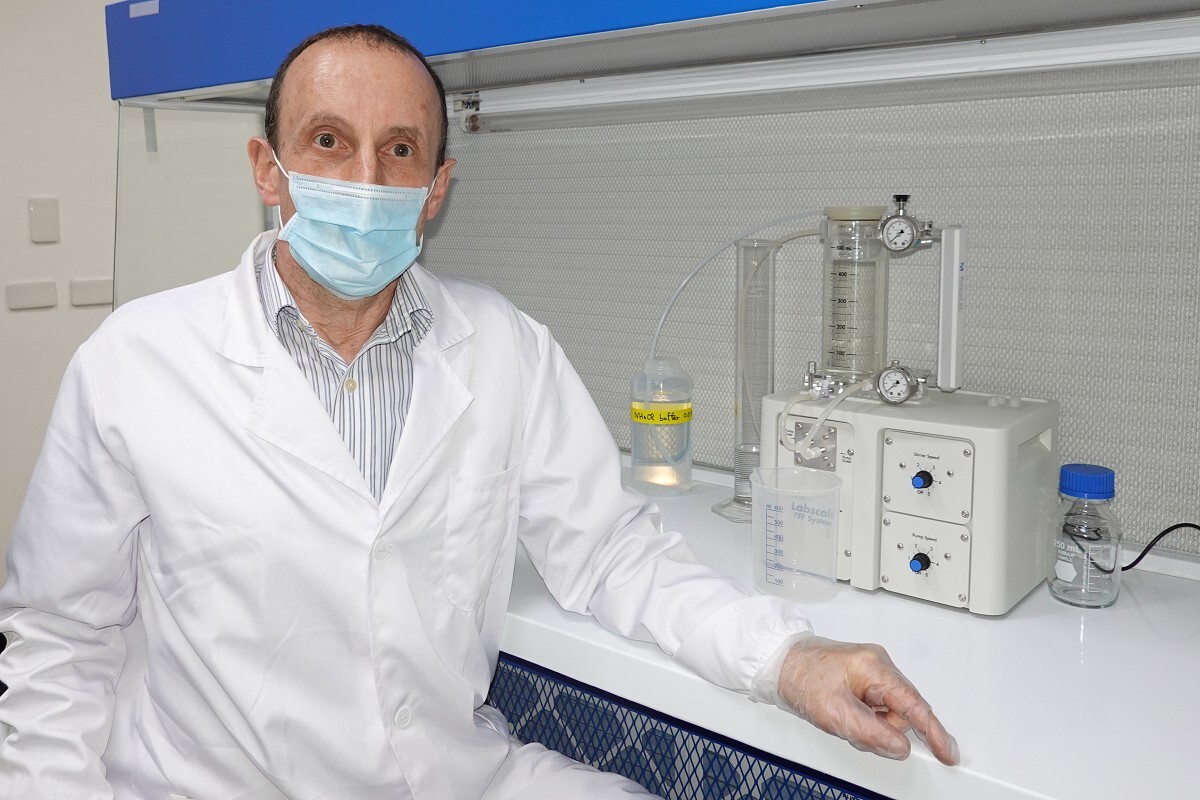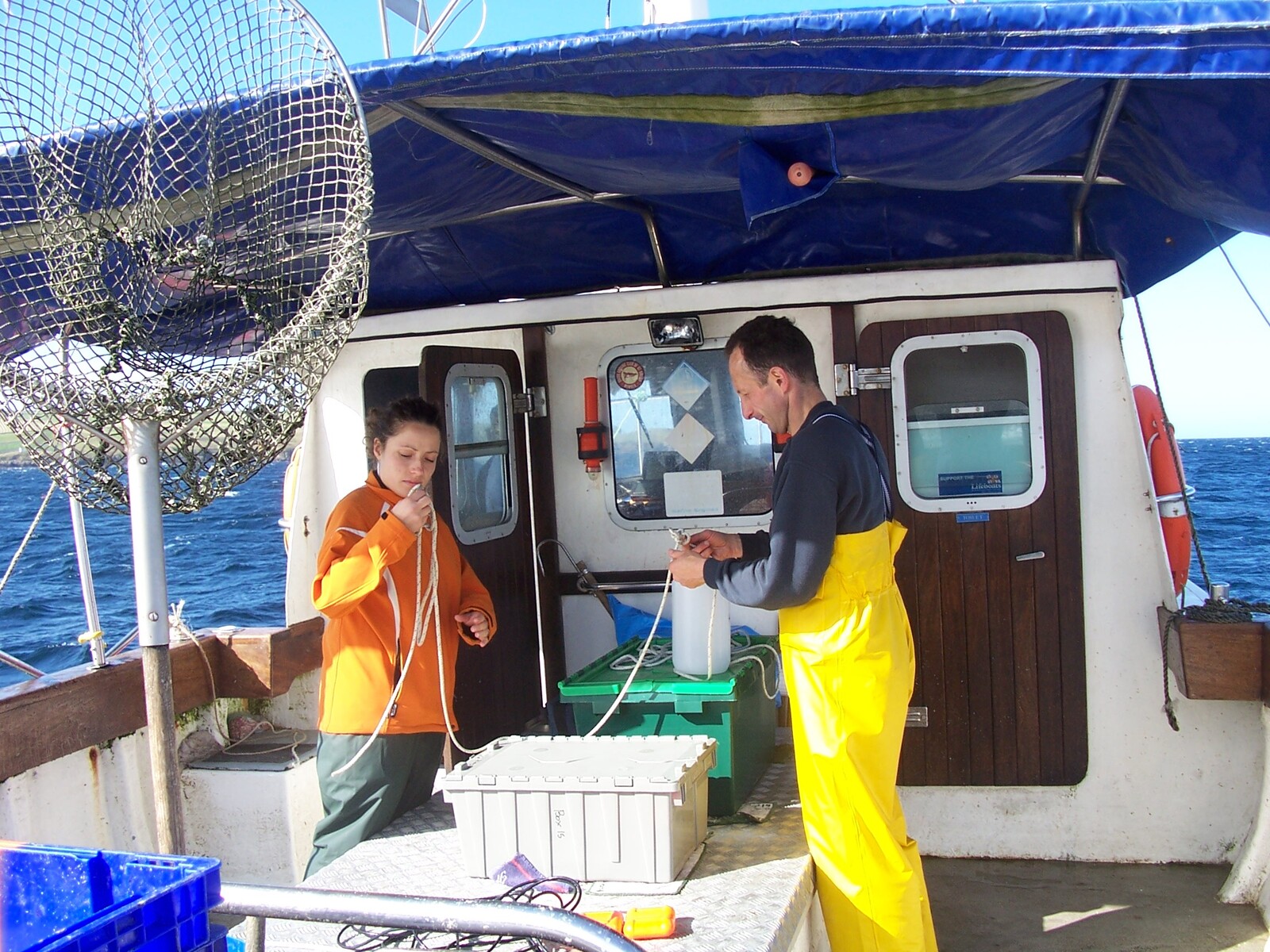What we do on land has a profound impact on our oceans: Associate Professor François Muller on marine dead zones


2022-01-27
According to the data by the International Union for Conservation of Nature, the oxygen content of the ocean has declined by around 2% since the middle of the 20th century overall and is expected to further decline by 3–4% by 2100 due to climate change and increased nutrient discharges. Meanwhile, the volume of ocean waters completely depleted of oxygen has quadrupled since the 1960s. This causes severe disruption of the ocean’s ecosystem services. “The situation in the water column can improve fast if we reduce fertilizers; we must also urgently mitigate climate change globally”, says Associate Professor François Muller of the Department of Oceanography at National Sun Yat-sen University.
“What we do on land has a profound impact on our oceans.” River discharge that flows into the sea contains nutrients from agricultural fertilizers meant for plant growth stimulation, such as nitrogen, phosphorus, and very often untreated sewage – an organic matter bomb. Severe eutrophication, or the excess of nutrients in the seawater, causes plant and algae overgrowth. As the excess algal cells die massively and decompose, large amounts of oxygen are consumed, which results in hypoxia – the severe undersaturation of seawater with oxygen. This is the first step towards the formation of marine ‘dead zones’ – bodies of water without sufficient oxygen to support most of marine life.
The consequences of ocean oxygen depletion include impoverished food chain, decreased biodiversity, reduction and displacement of fishery resources changes in species distribution, expanding algal blooms, and emission of greenhouse gases. Pelagic fish escape and benthic organisms die out, leaving marine ‘dead zones’ to be dominated by a wide range of specialized bacteria, of which some release greenhouse gases (nitrous oxide – N2O, methane – CH4) in their metabolic processes, says Professor Muller.
Besides nutrient discharge, climate change is a factor contributing to marine hypoxia and the forming of marine dead zones. “Climate change can lead to greater stratification and poorer mixing of seawater. Warming waters absorb less oxygen from the atmosphere as higher temperatures make oxygen less soluble.” Also, climate change drives extreme weather events: more floods will result in an increased discharge of terrestrial material including nutrients and organic matter to coastal ecosystems.
In the perspective of hundreds of years, global warming can disrupt the system of deep-ocean circulation driven by temperature and salinity and the formation of global deep water masses originating from the Earth’s polar caps. “So far, the deep oceans have not yet been affected by warming but if the climate further warms up, there will be less ice formation in the polar caps, and so global deep water masses are not going to be as cold and rich in oxygen.”
Taiwan is not left unaffected. The East China Sea, just off the northern coast of Taiwan, is one of the major hypoxic zones in the world, where the bottom waters get hypoxic at least seasonally, says Professor Muller. Seasonal wind patterns, poor seawater mixing, and the inflow of low-oxygen intermediate waters from Kuroshio Current do have an impact but the lion share of the responsibility is to be attributed to the discharge of nutrients from the Yangtze River, which has increased tenfold in the past 25 years.
Fortunately, there are solutions. Besides mitigating climate change, humanity must close the tap of nutrient input by better sewage treatment and reduction of fertilizers. Environmentally friendly fertilizers are coated with materials that degrade in the soil and stay longer in the ground. Several new environmental engineering solutions can be applied to small marine areas: water reoxygenation by pumping highly oxygenated air can have a positive effect on the water quality of a small coastal lagoon for even up to five years; where downward pumping of oxygen gas poses ecological risks, a better solution may be to deliver oxygen microbubbles via porous materials (zeolites) placed in contact with the sediment, says Professor Muller. Also, improving the connection of the lagoon to the sea by digging an additional inlet can help reduce stratification and improve the vertical mixing of oxygen.
According to various sources, the iceberg of marine pollution is much bigger than its visible tip – plastic pollution – and the majority is from land-based sources: pesticides incurring high environmental costs; mercury from coal combustion and gold mining that converts into biologically toxic organic methylmercury and deposits in fish tissue; spilled oil that harms and suffocates marine organisms; trace metals, pharmaceuticals, and chemicals that cannot be removed by wastewater treatment plants. Finally, artificial light and noise disrupt marine organisms’ communication, migration, reproduction, and feeding.
Associate Professor François Muller researches land-ocean interactions and develops analytical methods to study biogeochemical processes along the land-ocean aquatic continuum. One of his research interests is the transport of river-borne dissolved iron to the open ocean. “In the long term, increased land-ocean transfer of soluble iron bound to terrestrial humic substances transported through the surface and/or deep ocean circulation to the major ocean basins can boost the productivity of large phytoplankton cells, which contribute to climate cooling by exporting the heat-trapping CO2 in the atmosphere into the deep ocean,” says Professor Muller.
According to the data by the International Union for Conservation of Nature, the oxygen content of the ocean has declined by around 2% since the middle of the 20th century overall and is expected to further decline by 3–4% by 2100 due to climate change and increased nutrient discharges. Meanwhile, the volume of ocean waters completely depleted of oxygen has quadrupled since the 1960s. This causes severe disruption of the ocean’s ecosystem services. “The situation in the water column can improve fast if we reduce fertilizers; we must also urgently mitigate climate change globally”, says Associate Professor François Muller of the Department of Oceanography at National Sun Yat-sen University.
“What we do on land has a profound impact on our oceans.” River discharge that flows into the sea contains nutrients from agricultural fertilizers meant for plant growth stimulation, such as nitrogen, phosphorus, and very often untreated sewage – an organic matter bomb. Severe eutrophication, or the excess of nutrients in the seawater, causes plant and algae overgrowth. As the excess algal cells die massively and decompose, large amounts of oxygen are consumed, which results in hypoxia – the severe undersaturation of seawater with oxygen. This is the first step towards the formation of marine ‘dead zones’ – bodies of water without sufficient oxygen to support most of marine life.
The consequences of ocean oxygen depletion include impoverished food chain, decreased biodiversity, reduction and displacement of fishery resources changes in species distribution, expanding algal blooms, and emission of greenhouse gases. Pelagic fish escape and benthic organisms die out, leaving marine ‘dead zones’ to be dominated by a wide range of specialized bacteria, of which some release greenhouse gases (nitrous oxide – N2O, methane – CH4) in their metabolic processes, says Professor Muller.
Besides nutrient discharge, climate change is a factor contributing to marine hypoxia and the forming of marine dead zones. “Climate change can lead to greater stratification and poorer mixing of seawater. Warming waters absorb less oxygen from the atmosphere as higher temperatures make oxygen less soluble.” Also, climate change drives extreme weather events: more floods will result in an increased discharge of terrestrial material including nutrients and organic matter to coastal ecosystems.
In the perspective of hundreds of years, global warming can disrupt the system of deep-ocean circulation driven by temperature and salinity and the formation of global deep water masses originating from the Earth’s polar caps. “So far, the deep oceans have not yet been affected by warming but if the climate further warms up, there will be less ice formation in the polar caps, and so global deep water masses are not going to be as cold and rich in oxygen.”
Taiwan is not left unaffected. The East China Sea, just off the northern coast of Taiwan, is one of the major hypoxic zones in the world, where the bottom waters get hypoxic at least seasonally, says Professor Muller. Seasonal wind patterns, poor seawater mixing, and the inflow of low-oxygen intermediate waters from Kuroshio Current do have an impact but the lion share of the responsibility is to be attributed to the discharge of nutrients from the Yangtze River, which has increased tenfold in the past 25 years.
Fortunately, there are solutions. Besides mitigating climate change, humanity must close the tap of nutrient input by better sewage treatment and reduction of fertilizers. Environmentally friendly fertilizers are coated with materials that degrade in the soil and stay longer in the ground. Several new environmental engineering solutions can be applied to small marine areas: water reoxygenation by pumping highly oxygenated air can have a positive effect on the water quality of a small coastal lagoon for even up to five years; where downward pumping of oxygen gas poses ecological risks, a better solution may be to deliver oxygen microbubbles via porous materials (zeolites) placed in contact with the sediment, says Professor Muller. Also, improving the connection of the lagoon to the sea by digging an additional inlet can help reduce stratification and improve the vertical mixing of oxygen.
According to various sources, the iceberg of marine pollution is much bigger than its visible tip – plastic pollution – and the majority is from land-based sources: pesticides incurring high environmental costs; mercury from coal combustion and gold mining that converts into biologically toxic organic methylmercury and deposits in fish tissue; spilled oil that harms and suffocates marine organisms; trace metals, pharmaceuticals, and chemicals that cannot be removed by wastewater treatment plants. Finally, artificial light and noise disrupt marine organisms’ communication, migration, reproduction, and feeding.
Associate Professor François Muller researches land-ocean interactions and develops analytical methods to study biogeochemical processes along the land-ocean aquatic continuum. One of his research interests is the transport of river-borne dissolved iron to the open ocean. “In the long term, increased land-ocean transfer of soluble iron bound to terrestrial humic substances transported through the surface and/or deep ocean circulation to the major ocean basins can boost the productivity of large phytoplankton cells, which contribute to climate cooling by exporting the heat-trapping CO2 in the atmosphere into the deep ocean,” says Professor Muller.
Click Num:
Share
